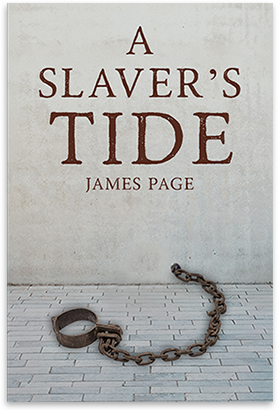
2. History matters
In the 1977 TV miniseries Roots, based on Alex Haley’s best-selling novel, Kunta Kinte is enslaved after he runs across a white slaving party including four black slavers. That left the impression for many that white slavers operated deep into the African interior to hunt for slaves. Which isn’t at all the case actually.In reality white sailors did not venture inland. Life expectancy for whites travelling into the interior was around a year, and that is if they weren’t captured and sold into slavery themselves. If they did travel inland they would probably come down with a fever, most likely from malaria, although the knowledge of what caused malaria, and treatments, were not around at the time. In fact the greatest single advance in terms of white incursions into Africa’s interior, quinine, was not widely used until the second half of the 19th century, after slavery had largely been outlawed.
The vast majority of those enslaved were delivered to the coasts of west Africa by fellow Africans, sometimes in concert with Arab slave traders, though mostly working for African kingdoms, who exchanged slaves for guns, tobacco and other trade goods. As demand increased, so did the delivery of slaves to the coast.
Which begs the question how exactly demand increased? The story (in its simplest form) is that plantation agriculture began on the island of Sao Tome (off the west coast of Africa) and that system relied on “free” labour, supplied by slaves. Free to the plantation owners, not for the slaves, obviously. It soon became clear to the owners of that system that as more slaves were easy to get, so the slaves working on the plantations came to be thought of as disposable. That is they could be worked to death as there was a plentiful supply of slaves that could replace the dead ones. So the entire economics of the plantation system came to see the death of slaves, working in fields until they died, usually by the seventh year of forced labour, as not just normal, but the basis of the whole system. And then when the western hemisphere was opened up after Columbus’s voyages, that system was adopted in the Carribean and beyond, and well, demand rose and the suppliers continued to meet that demand.
But weren’t they people, these slaves? Well yes of course, but crucially they were not Christian people, and the countries operating plantation systems on Sao Tome and soon after in the Carribean and North America viewed non-Christians as, well, lesser. In fact the Church tacitly gave its blessing to the trade, as did European powers and others. But if they were heathens shouldn’t they be bought into the light of Christ? Well again yes, but there was a problem.
That meant sending missionaries into Africa but they couldn’t operate in the interior due to disease, illness and the fear of getting enslaved themselves. So instead somehow that idea was forgotten and twisted and it become okay to use these non-Christian heathens as slaves. And it wasn’t like the plantation agricultural system wasn’t lucrative. After all it was producing rivers of money that were flowing with greater intensity back to Europe, which also meant the Church. So with everyone involved, other than the slaves, getting richer (for example some European cities saw their own economies grow by tens or even hundreds of millions of dollars adjusted to today’s currency value) pretty soon the whole idea of saving Africans was conveniently overlooked. Money does that. Think tobacco, fossil fuels, chemicals, a whole range of businesses that were aware of the dangers or problems involved but, hey you know money. Lots and lots and heaps of money!
There was more to it, but essentially that was the basis of the ever-expanding trade in humans. And from this system that deliberately saw black people as lesser, racism began or was developed and sometimes grew and accelerated. And the real problem today is that so much of those racist constructs remain. If you want a far more detailed explanation check out the work of Ibram Kendi, David Olusoga, Olivette Otele or a range of other writers. There are a couple of links on my twitter feed Jimmypagewrites too.
The point of all of this is that an invented system, based on devaluing some human lives on the basis of skin colour, to make obscene amounts of money, is in large part one of the main reasons we have racism today. And Haley’s portrayal of Kunta Kinte’s enslavement is one of the reasons many people think that white slave traders raided far inland to find slaves.
Who said history isn’t relevant today, or Hollywood’s version of it, for that matter.
Post Views : 282